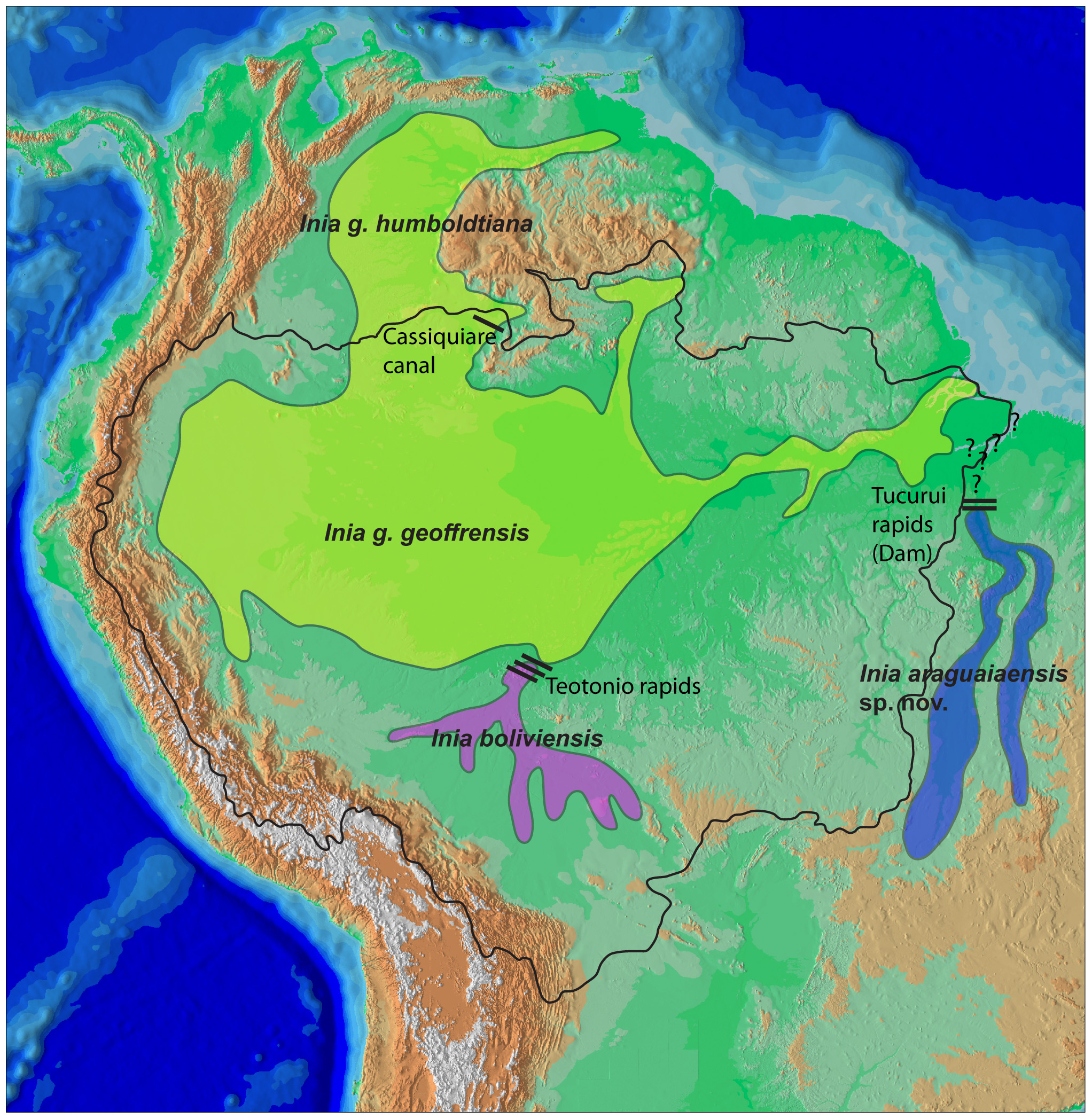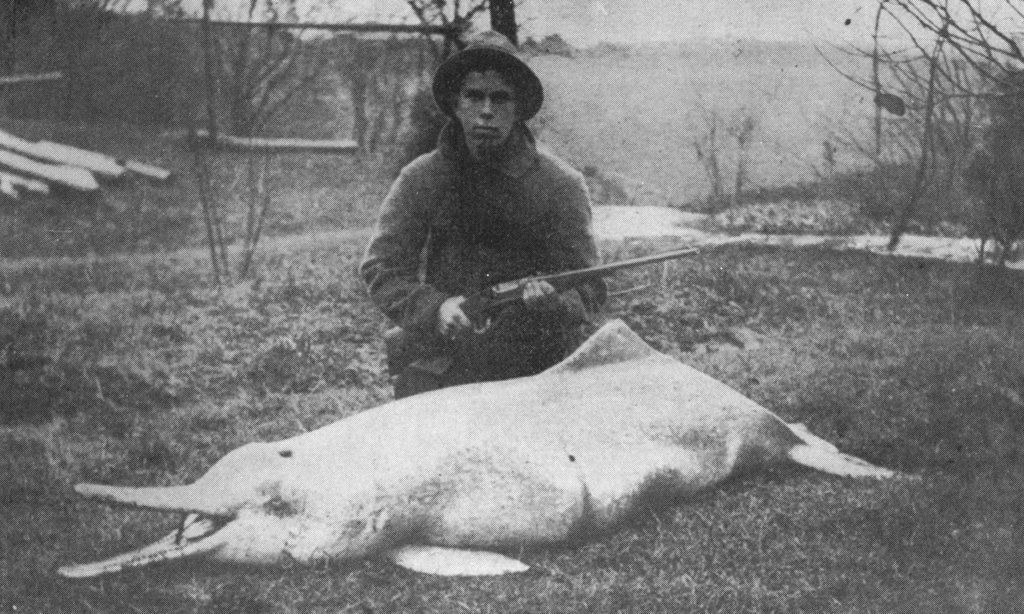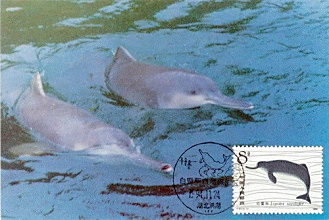|
Lipotidae
Lipotidae is a family of river dolphins containing the possibly extinct baiji of China and the fossil genus ''Parapontoporia'' from the Late Miocene and Pliocene of the Pacific coast of North America. The genus '' Prolipotes'', which is based on a mandible fragment from Neogene coastal deposits in Guangxi, China, has been classified as an extinct relative of the baiji, but is dubious. The putative kentriodontid '' "Lophocetus" pappus'' is a possible relative of Lipotidae.Olivier Lambert, Giovanni Bianucci, Mario Urbina, Jonathan H. Geisler; A new inioid (Cetacea, Odontoceti, Delphinida) from the Miocene of Peru and the origin of modern dolphin and porpoise families. Zool J Linn Soc 2017; 179 (4): 919-946. doi: 10.1111/zoj.12479. https://academic.oup.com/zoolinnean/article/179/4/919/3076080/A-new-inioid-Cetacea-Odontoceti-Delphinida-from?guestAccessKey=3b956b95-d215-488a-8d90-1cff59554290#63703008 Genera and Species * †(?) '' Lipotes'' ** †(?) ''Lipotes vexillifer'' * ''Par ... [...More Info...] [...Related Items...] OR: [Wikipedia] [Google] [Baidu] |
Lipotes Vexillifer
The baiji (; IPA: ; ''Lipotes vexillifer'', ''Lipotes'' meaning "left behind" and ''vexillifer'' "flag bearer") is a possibly extinct species of freshwater dolphin native to the Yangtze river system in China. It is thought to be the first dolphin species driven to extinction due to the impact of humans. This dolphin is listed as “critically endangered: possibly extinct” by the IUCN, has not been seen in 20 years, and several surveys of the Yangtze have failed to find it. In China, the species is also called the Chinese river dolphin, Yangtze river dolphin, Yangtze dolphin and whitefin dolphin. Nicknamed the "Goddess of the Yangtze" (), it was regarded as the goddess of protection by local fishermen and boatmen. It is not to be confused with the Chinese white dolphin (''Sousa chinensis'') or the finless porpoise (''Neophocaena phocaenoides''). The baiji population declined drastically in decades as China industrialized and made heavy use of the river for fishing, transportati ... [...More Info...] [...Related Items...] OR: [Wikipedia] [Google] [Baidu] |
River Dolphin
River dolphins are a polyphyletic group of fully aquatic mammals that reside exclusively in freshwater or brackish water. They are an informal grouping of dolphins, which itself is a paraphyletic group within the infraorder Cetacea. Extant river dolphins are placed in two superfamilies, Platanistoidea and Inioidea. They comprise the families Platanistidae (the South Asian dolphins), the recently extinct Lipotidae (Yangtze river dolphin), Iniidae (the Amazonian dolphins) and Pontoporiidae. There are five extant species of river dolphins. River dolphins, alongside other cetaceans, belong to the clade Artiodactyla, with even-toed ungulates, and their closest living relatives the hippopotamuses, from which they diverged about 40 million years ago. Specific types of Dolphins can be pink. River dolphins are relatively small compared to other dolphins, having evolved to survive in warm, shallow water and strong river currents. They range in size from the long South Asian river do ... [...More Info...] [...Related Items...] OR: [Wikipedia] [Google] [Baidu] |
Baiji
The baiji (; IPA: ; ''Lipotes vexillifer'', ''Lipotes'' meaning "left behind" and ''vexillifer'' "flag bearer") is a possibly extinct species of freshwater dolphin native to the Yangtze river system in China. It is thought to be the first dolphin species driven to extinction due to the impact of humans. This dolphin is listed as “critically endangered: possibly extinct” by the IUCN, has not been seen in 20 years, and several surveys of the Yangtze have failed to find it. In China, the species is also called the Chinese river dolphin, Yangtze river dolphin, Yangtze dolphin and whitefin dolphin. Nicknamed the "Goddess of the Yangtze" (), it was regarded as the goddess of protection by local fishermen and boatmen. It is not to be confused with the Chinese white dolphin (''Sousa chinensis'') or the finless porpoise (''Neophocaena phocaenoides''). The baiji population declined drastically in decades as China industrialized and made heavy use of the river for fishing, transportati ... [...More Info...] [...Related Items...] OR: [Wikipedia] [Google] [Baidu] |
Baiji
The baiji (; IPA: ; ''Lipotes vexillifer'', ''Lipotes'' meaning "left behind" and ''vexillifer'' "flag bearer") is a possibly extinct species of freshwater dolphin native to the Yangtze river system in China. It is thought to be the first dolphin species driven to extinction due to the impact of humans. This dolphin is listed as “critically endangered: possibly extinct” by the IUCN, has not been seen in 20 years, and several surveys of the Yangtze have failed to find it. In China, the species is also called the Chinese river dolphin, Yangtze river dolphin, Yangtze dolphin and whitefin dolphin. Nicknamed the "Goddess of the Yangtze" (), it was regarded as the goddess of protection by local fishermen and boatmen. It is not to be confused with the Chinese white dolphin (''Sousa chinensis'') or the finless porpoise (''Neophocaena phocaenoides''). The baiji population declined drastically in decades as China industrialized and made heavy use of the river for fishing, transportati ... [...More Info...] [...Related Items...] OR: [Wikipedia] [Google] [Baidu] |
Kentriodontidae
Kentriodontidae is an extinct family of odontocete whales related to modern dolphins. The Kentriodontidae lived from the Oligocene to the Pliocene before going extinct. Taxonomy Kentriodontids have been variously divided into three or four subfamilies: Kampholophinae, Kentriodontinae, Lophocetinae, and Pithanodelphinae. However, recent cladistic studies have recovered Kentriodontidae as paraphyletic. Pyenson ND Vélez-Juarbe J Gutstein CS Little H Vigil D O’Dea A . 2015. Isthminia panamensis, a new fossil inioid (Mammalia, Cetacea) from the Chagres Formation of Panama and the evolution of ‘river dolphins’ in the Americas. PeerJ 3: e1227.O. Lambert, G. Bianucci, M. Urbina and J. H. Geisler. 2017. A new inioid (Cetacea, Odontoceti, Delphinida) from the Miocene of Peru and the origin of modern dolphin and porpoise families. Zoological Journal of the Linnean Society 179:919-946. For instance, ''"Lophocetus" pappus'' may be a close relative of Lipotidae, '' "Delphinodon" divid ... [...More Info...] [...Related Items...] OR: [Wikipedia] [Google] [Baidu] |
Lophocetus
''Lophocetus'' ("crested whale") is an extinct genus of dolphin belonging to the clade Delphinida that is known from late Miocene (Tortonian) marine deposits in California and Maryland. Although usually placed in Kentriodontidae, recent studies have found it only distantly related to ''Kentriodon''. Discovery and taxonomy ''Lophocetus'' was the first fossil odontocete to be described from North America. The type species, ''L. calvertensis'', was originally described as ''Delphinus calvertensis'' by the American naturalist Richard Harlan in 1842 on the basis of USNM 16314, a skull from the St. Marys Formation of Maryland. Edward Drinker Cope subsequently recognized it as distinct from extant oceanic dolphins and considered it congeneric with the franciscana (as ''Pontoporia calvertensis''), before renaming it as a distinct genus, ''Lophocetus''. In 1955, Remington Kellogg described a new species of ''Lophocetus'', ''L. pappus'', on the basis of the skull USNM 15985 from the Lang ... [...More Info...] [...Related Items...] OR: [Wikipedia] [Google] [Baidu] |
Family (biology)
Family ( la, familia, plural ') is one of the eight major hierarchical taxonomic ranks in Linnaean taxonomy. It is classified between order and genus. A family may be divided into subfamilies, which are intermediate ranks between the ranks of family and genus. The official family names are Latin in origin; however, popular names are often used: for example, walnut trees and hickory trees belong to the family Juglandaceae, but that family is commonly referred to as the "walnut family". What belongs to a family—or if a described family should be recognized at all—are proposed and determined by practicing taxonomists. There are no hard rules for describing or recognizing a family, but in plants, they can be characterized on the basis of both vegetative and reproductive features of plant species. Taxonomists often take different positions about descriptions, and there may be no broad consensus across the scientific community for some time. The publishing of new data and opin ... [...More Info...] [...Related Items...] OR: [Wikipedia] [Google] [Baidu] |
Parapontoporia
''Parapontoporia'' is an extinct genus of dolphin that lived off the Californian coast from the Late Miocene until the genus' extinction during the Pliocene. It is related to the baiji The baiji (; IPA: ; ''Lipotes vexillifer'', ''Lipotes'' meaning "left behind" and ''vexillifer'' "flag bearer") is a possibly extinct species of freshwater dolphin native to the Yangtze river system in China. It is thought to be the first dolph .... References SDNHM Fossil Mysteries Field Guide: Long-snouted Dolphin Prehistoric toothed whales Miocene cetaceans Pliocene cetaceans Pliocene extinctions Dolphins Prehistoric cetacean genera Fossil taxa described in 1984 {{paleo-whale-stub ... [...More Info...] [...Related Items...] OR: [Wikipedia] [Google] [Baidu] |
Miocene
The Miocene ( ) is the first epoch (geology), geological epoch of the Neogene Period and extends from about (Ma). The Miocene was named by Scottish geologist Charles Lyell; the name comes from the Greek words (', "less") and (', "new") and means "less recent" because it has 18% fewer modern marine invertebrates than the Pliocene has. The Miocene is preceded by the Oligocene and is followed by the Pliocene. As Earth went from the Oligocene through the Miocene and into the Pliocene, the climate slowly cooled towards a series of ice ages. The Miocene boundaries are not marked by a single distinct global event but consist rather of regionally defined boundaries between the warmer Oligocene and the cooler Pliocene Epoch. During the Early Miocene, the Arabian Peninsula collided with Eurasia, severing the connection between the Mediterranean and Indian Ocean, and allowing a faunal interchange to occur between Eurasia and Africa, including the dispersal of proboscideans into Eurasia. ... [...More Info...] [...Related Items...] OR: [Wikipedia] [Google] [Baidu] |
Pliocene
The Pliocene ( ; also Pleiocene) is the epoch in the geologic time scale that extends from 5.333 million to 2.58See the 2014 version of the ICS geologic time scale million years ago. It is the second and most recent epoch of the Neogene Period in the Cenozoic Era. The Pliocene follows the Epoch and is followed by the Epoch. Prior to the 2009 revision of the geologic time sca ... [...More Info...] [...Related Items...] OR: [Wikipedia] [Google] [Baidu] |
Mammal Families
Mammals () are a group of vertebrate animals constituting the class Mammalia (), characterized by the presence of mammary glands which in females produce milk for feeding (nursing) their young, a neocortex (a region of the brain), fur or hair, and three middle ear bones. These characteristics distinguish them from reptiles (including birds) from which they diverged in the Carboniferous, over 300 million years ago. Around 6,400 extant species of mammals have been described divided into 29 orders. The largest orders, in terms of number of species, are the rodents, bats, and Eulipotyphla (hedgehogs, moles, shrews, and others). The next three are the Primates (including humans, apes, monkeys, and others), the Artiodactyla (cetaceans and even-toed ungulates), and the Carnivora (cats, dogs, seals, and others). In terms of cladistics, which reflects evolutionary history, mammals are the only living members of the Synapsida (synapsids); this clade, together with Saurops ... [...More Info...] [...Related Items...] OR: [Wikipedia] [Google] [Baidu] |






